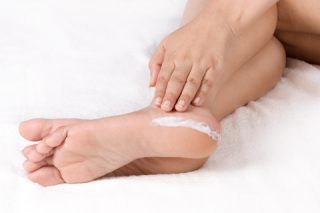Corns, Callous & Chiropody
 One of the most common reasons people seek our Podiatrists’ help is for corns and callous. So what exactly is a corn? What is callous? How do they form? And how do we treat them?
One of the most common reasons people seek our Podiatrists’ help is for corns and callous. So what exactly is a corn? What is callous? How do they form? And how do we treat them?
Does a Podiatrist deal with corns and callous?
Yes! Corns and callous are the mainstay of what used to be termed chiropody type treatments. As we discussed in our recent blog, podiatry is an updated term for chiropody and encompasses the same skills, although updated, as well as a higher skill level with treating complex issues such as lower limb biomechanics, diabetic foot care, sports injuries and orthotic therapy.
What is a corn?
A hard corn (or heloma durum) is a small, painful area of thickened skin on the foot, usually on the toes or sole of the forefoot. Recent research from a May 2013 College of Podiatry Survey found that a quarter of women had suffered from corns at some point. The same problem is becoming more common in men due to increasing fashion for tapered footwear.
Why do corns form?
A hard corn is a small area of callous, and is cone shaped and tapers into the skin. Because it tapers to a point, this point can cause great discomfort and if left untreated tissue damage and even ulceration. A soft corn can also form, normally between the toes the center of the corn is still not soft though.
Corns are a signal that there is friction or undue pressure on a specific area. Corns to the edge of the small 5th toe can indicate footwear that is too tight and tapered at the toe box. Corns to the forefoot can indicate a biomechanical anomaly such as a collapsed transverse arch and forefoot splaying.
What is callous?
Nearly half of all women have reported callous/cracked heels. Callous, or excess hard skin, is formed by excess friction over time such as on fingertips from guitar playing, rock climbing or manual labour for example. We see callous most commonly on the soles of the feet, from constant, moderate, rubbing pressure. (A very fast, short-term increase in friction will cause a blister instead). Callous is made up of keratin, which is very tough and resistant to at-home remedies such as occasional foot filing or scrubs. Therefore, once callous has built up, it is best to see a Podiatrist for specialist pain free removal and advice on how to prevent it in the future. Callous can also occasionally form due to hyperkeratosis, a condition where corns and callous can form due to genetic reasons, age or hormonal changes.
Who gets corns and callous?
Professions involving a lot of standing and walking such as teaching, nursing, airline cabin crew and chefs typically present with corn and callous complaints. It is highly unusual to see corns or callous in children “ sometime verrucas can be confused for a corn in children, which is in fact a virus with very different treatment.
What is the best way to treat corns and callous?
Once you have developed corns or callous, the best person to see is a Podiatrist. We will:
(1) use the pattern of callous / corn formation to forensically diagnose any unusual pressure patterns on your feet, as part of a biomechanical assessment.
(2) use sterile specialist equipment and medical training to safely and painlessly remove the callous / corn. Corns should never be surgically removed, as this can lead to scarring, which is much more problematic in the long-run than the initial problem. Corns should be painlessly enucleated, popping out the cone of hard skin without damaging the healthy living surrounding tissue and skin.
(3) Never use corn pads as these can contain damaging acids and medications which macerate and burn the healthy tissue around the corn, do not remove the corn and again cause more issues than the original corn.
(4) Advise on how to minimize recurrence, depending on the underlying reason for the hard skin/corn. We identify the source of your corns/callous by analyzing where they are forming, your footwear, lifestyle and a biomechanical assessment.
At Dubai Podiatry Centre, we take a different approach rather than just constantly, repeatedly removing the same callous or corns, we identify the underlying problem and empower the patient with a detailed diagnosis and reason for the issue. Advice can range from
• footwear recommendations,
• patient-specific footcare regime with specialist creams, usually containing urea,
• to custom orthotic therapy should the source of the issue be an underlying biomechanical misalignment (causing excessive force to a certain part of the foot).
Our patients all lead busy, active lives and seek our assistance because they are seeking an intelligent, holistic, forward thinking foot health solution for the long term. We aim to empower our patients with a thorough assessment, diagnosis and treatment options to keep you on your feet and pain free.
Contact our expert team of UK qualified, experienced and DHA licensed Podiatrists on +971 4 3435390 today.







